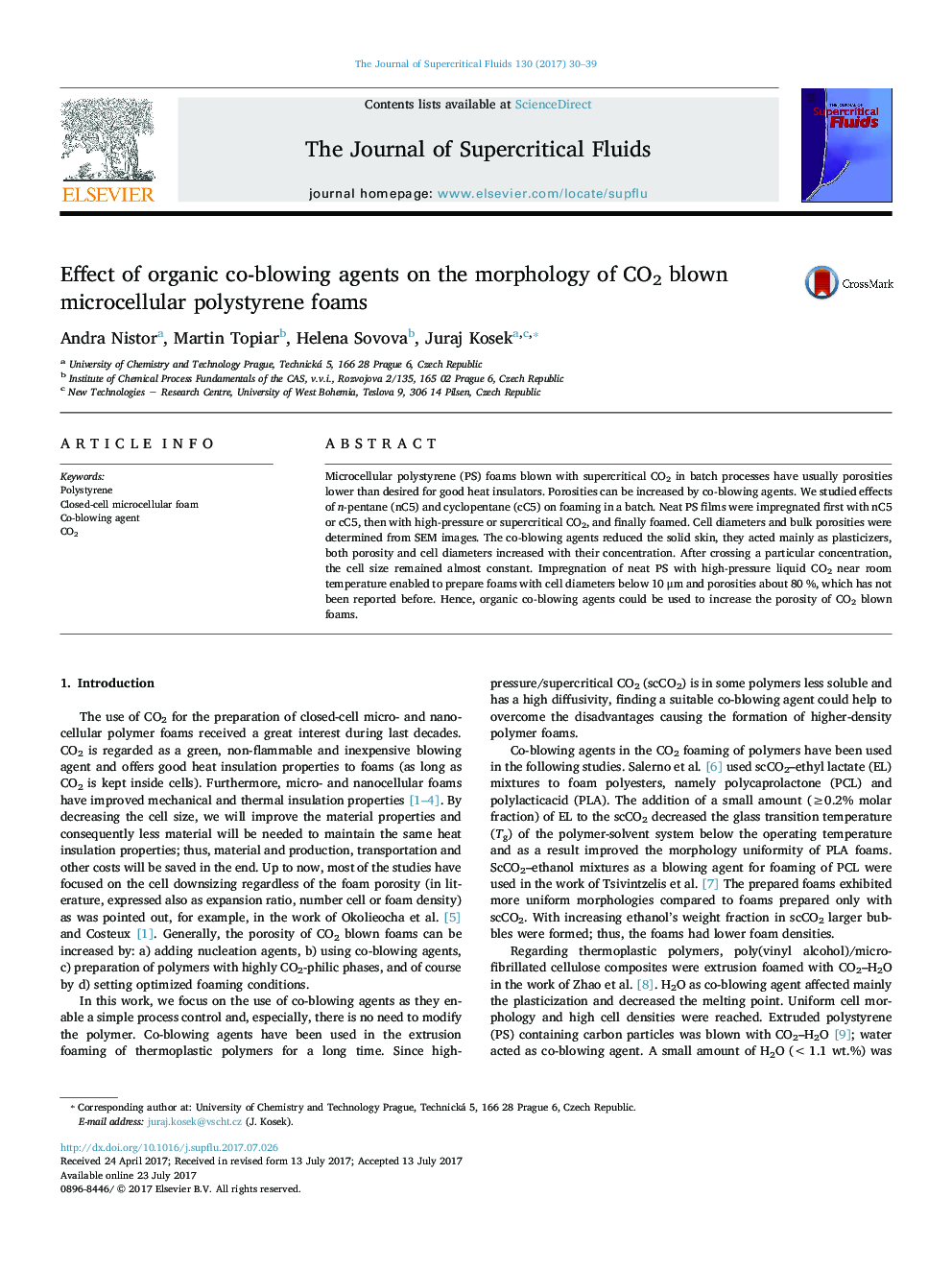| Article ID | Journal | Published Year | Pages | File Type |
|---|---|---|---|---|
| 6477662 | The Journal of Supercritical Fluids | 2017 | 10 Pages |
â¢Co-blowing agents n-pentane and/or cyclopentane were used in CO2 batch foaming.â¢The agents increase foam porosity and can induce a bimodal cell size distribution.â¢They enable foaming near the room temperature.â¢Porosities of almost 80% were reached while maintaining the cell diameter <10 μm.
Microcellular polystyrene (PS) foams blown with supercritical CO2 in batch processes have usually porosities lower than desired for good heat insulators. Porosities can be increased by co-blowing agents. We studied effects of n-pentane (nC5) and cyclopentane (cC5) on foaming in a batch. Neat PS films were impregnated first with nC5 or cC5, then with high-pressure or supercritical CO2, and finally foamed. Cell diameters and bulk porosities were determined from SEM images. The co-blowing agents reduced the solid skin, they acted mainly as plasticizers, both porosity and cell diameters increased with their concentration. After crossing a particular concentration, the cell size remained almost constant. Impregnation of neat PS with high-pressure liquid CO2 near room temperature enabled to prepare foams with cell diameters below 10 μm and porosities about 80 %, which has not been reported before. Hence, organic co-blowing agents could be used to increase the porosity of CO2 blown foams.
Graphical abstractDownload high-res image (291KB)Download full-size image
